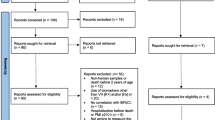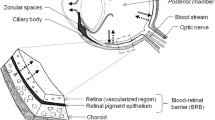Abstract
Biochemical analysis of the vitreous humor from the eye is an accepted accessory test for post-mortem investigation of cause of death. Modern biochemical analyzers allow testing of a range of analytes from a sample. However, it is not clear which analytes should be requested in order to prevent unnecessary testing (and expense). The means and standard deviation of the values obtained from analysis of the vitreous humor for sodium, potassium, chloride, osmolality, glucose, ketones (β-hydroxybutyrate), creatinine, urea, calcium, lactate, and ammonia were calculated from which the contribution of each analyte was reviewed in the context of post-mortem findings and final cause of death. For sodium 32 cases were regarded as high (more than one standard deviation above the mean), from which 9 contributed to post-mortem diagnosis [drowning (4), heat related death (2), diabetic hyperglycemia (2), and dehydration (1)], but 25 low values (greater than one standard deviation below the mean) made no contribution. For chloride 29 high values contributed to 4 cases—3 drowning and 1 heat-related, but these were all previously identified by a high sodium level. There were 29 high and 35 low potassium values, none of which contributed to determining the final cause of death. Of 22 high values of creatinine, 12 contributed to a diagnosis of renal failure. From 32 high values of urea, 18 contributed to 16 cases of renal failure (2 associated with diabetic hyperglycemia), 1 heat-related death, and one case with dehydration. Osmolarity contributed to 12 cases (5 heat-related, 4 diabetes, 2 renal failure, and 1 dehydration) from 36 high values. There was no contribution from 32 high values and 19 low values of calcium and there was no contribution from 4 high and 2 low values of ammonia. There were 11 high values of glucose, which contributed to the diagnosis of 6 cases of diabetic hyperglycemia and 21 high ketone levels contributed to 8 cases: 4 diabetic ketosis, 3 hypothermia, 3 ketosis of unknown cause, and 2 alcohol related deaths. A high lactate was identified in 25 cases, which contributed to 1 case with a diagnosis of metformin toxicity (1), but none of the 22 low lactate values contributed. The results of this audit have been used to reduce vitreous biochemistry test requests for sodium, osmolality, glucose, ketones, urea, and creatinine in most cases. Critical appraisal of each part of the post-mortem process should be undertaken to provide evidence to justify any investigative methods used in an autopsy.
Similar content being viewed by others
References
Coe JI. Use of chemical determinants on vitreous humor in forensic pathology. J Forensic Sci. 1972;17:541–6.
Madea B, Musshoff F. Postmortem biochemistry. Forensic Sci Int. 2007;165:165–71.
Madea B, Lachenmeier DW. Postmortem diagnosis of hypertonic dehydration. Forensic Sci Int. 2005;155:1–6.
Henry JB, Smith FA. Estimation of the postmortem interval by chemical means. Am J Forensic Med Pathol. 1980;1:341–7.
Coe JI. Vitreous potassium as a measure of the postmortem interval: an historical review and critical evaluation. Forensic Sci Int. 1989;42:201–13.
Blana SA, Mußhoff F, Hoeller T, Fimmers R, Madea B. Variations in vitreous humor chemical values as a result of pre-analytical treatment. Forensic Sci Int. 2011;210:263–70.
Coe JI, Apple FS. Variations in vitreous humor chemical values as a result of instrumentation. J Forensic Sci. 1985;30:828–35.
Balasooriya BAW, St Hill CA, Williams AR. The biochemistry of vitreous humour. A comparative study of the potassium, sodium and urate concentrations in the eyes at identical time intervals after death. Forensic Sci Int. 1984;26:85–91.
Pounder DJ, Carson DO, Johnston K, Orihara Y. Electrolyte concentration differences between left and right vitreous humour samples. J Forensic Sci. 1998;43:604–7.
CoeI Postmortem Chemistry Update. Am J Forensic Med Pathol. 1993;14:91–117.
Jashnani KD, Kale SA, Rupani AB. Vitreous humor: biochemical constituents in estimation of postmortem interval. J Forensic Sci. 2010;55:1523–7.
Mihailovic Z, Atanasijevic T, Popovic V, Milosevic MB, Sperhake JP. Estimation of the postmortem interval by analyzing potassium in the vitreous humor. Could repetitive sampling enhance accuracy? Am J Forensic Med Pathol. 2012;33:400–3.
Madea B, Herrmann N, Henbge C. Precision of estimating the time since death by vitreous potassium—comparison of two different equations. Forensic Sci Int. 1990;46:277–84.
Farmer JG, Benomran F, Watson AA, Harland WA. Magnesium, potassium, sodium and calcium in post-mortem vitreous humour from humans. Forensic Sci Int. 1985;27:1–13.
Wetherton AR, Corey TS, Buchino JJ, Burrows AM. Fatal intravenous injection of potassium in hospitalised patients. Am J Forensic Med Pathol. 2003;24:128–31.
Werner M, Marsh WL. Normal values: theoretical and practical aspects. CRC Crit Rev Clin Lab Sci. 1975;6:81–100.
Becktel JM. Simplified estimation of normal ranges from routine laboratory data. Clin Chim Acta. 1970;28:119–25.
Harris EK. Some theory of reference values. I. Stratified (Categorized) normal ranges and a method for following an individual’s clinical laboratory values. Clin Chem. 1975;21:1457–64.
Tietz NW, Shuey DF, Wekstein DR. Laboratory values in fit aging individuals-sexagenarians through centenarians. Clin Chem. 1992;38:1167–85.
Edwards G, Foster A, Livesey C. Use of ocular fluids to aid postmortem diagnosis in cattle and sheep. In Practice. 2009;31:22–5.
Huser CJ, Smialek JE. Diagnosis of sudden death in infants due to acute dehydration. Am J Forensic Med Pathol. 1986;1986:278–82.
Ingham AI, Byard RW. The potential significance of elevated vitreous sodium levels at autopsy. J Forensic Leg Med. 2009;16:437–40.
Byard RW, Summersides G. Vitreous humor sodium levels in drowning. J Forensic Sci. 2011;56:643–4.
Byard RW, Riches KJ. Dehydration and heat-related death. Sweat lodge syndrome. Am J Forensic Med Pathol. 2005;26:236–9.
Palmiere C, Mangin P. Postmortem chemistry update part I. Int J Legal Med. 2012;126:187–98.
Rodojevic N, Bjelogrlic B, Aleksic V, Rancic N, Samardzic M, Petkovic S, et al. Forensic aspects of water intoxication: four case reports and review of relevant literature. Forensic Sci Int. 2012;220:1–5.
Péclet C, Picotte P, Jobin F. The use of vitreous humor levels of glucose, lactic acid and blood levels of acetone to establish antemortem hyperglycaemia in diabetics. Forensic Sci Int. 1994;65:1–6.
Zilg B, Alkass K, Berg S, Druid H. Postmortem identification of hyperglycemia. Forensic Sci Int. 2009;185:89–95.
Osuma E, Vivero G, Conejero J, Abenza JM, Matrtínez P, Luna A, et al. Postmortem vitreous humor β-hydroxybutyrate: its utility for the postmortem interpretation of diabetes mellitus. Forensic Sci Int. 2005;153:189–95.
Teresinski G, Buszewicz G, Madro R. The influence of ethanol on the level of ketone bodies in hypothermia. Forensic Sci Int. 2002;127:88–96.
Thomsen JL, Simonsen KW, Felby S, Frohlich B. A prospective toxicology analysis in alcoholics. Forensic Sci Int. 1997;90:33–40.
Pounder DJ, Stevenson RJ, Taylor KK. Alcoholic ketoacidosis at autopsy. J Forensic Sci. 1998;43:812–6.
Kadĭs P, Balažic J, Ferlan-Marlot V. Alcoholic ketoacidosis: a cause of sudden death of chronic alcoholics. Forensic Sci Int. 1999;103:S53–9.
Hockenhull J, Dhillo W, Andrews R, Paterson S. Investigation of markers to indicate and distinguish death due to Alcoholic Ketoacidosis, Diabetic Ketoacidosis and Hyperosmolar Hyperglycemic State using post-mortem samples. Forensic Sci Int. 2012;214:142–7.
Causso C, Arrieta F, Hernández J, Botella-Carretero JI, Muro M, Puerta C, et al. Severe ketoacidosis secondary to starvation in a fruitarian patient. Nutr Hosp. 2010;25:1049–52.
Osuna E, García-Víllora A, Pérez-Cárceles M, Conejero J, Abenza JM, Martínez P, et al. Glucose and lactate in vitreous humor compared with the determination of fructosamine for the postmortem diagnosis of diabetes mellitus. Am J Forensic Med Pathol. 2001;22:244–9.
Kernbach-Wighton G, Sprung R, Püschel K. On the diagnosis of hypoglycemia in car drivers—including a review of the literature. Forensic Sci Int. 2001;115:89–94.
De Letter EA, Piette MHA. Can routinely combined analysis of glucose and lactate in vitreous humour be useful in current forensic practice? Am J Forensic Med Pathol. 1998;19:335–42.
Palmiere C, Sporkert F, Vaucher P, Werner D, Bardy D, Rey F, et al. Is the formula of Traub still up to date in antemortem blood glucose level estimation? Int J Legal Med. 2012;126:407–13.
DePalo VA, Mailer K, Yoburn D, Crausman RS. Lactic acidosis associated with metformin use in treatment of type 2 diabetes mellitus. Geriatrics. 2005;60(11):36, 39–41
Perrone J, Phillips C, Gaieski D. Occult metformin toxicity in three patients with profound lactic acidosis. J Emerg Med. 2011;40:271–5.
Bhatia V, Singh R, Acharya SK. Predictive value of arterial ammonia for complications and outcome in acute liver failure. Gut. 2006;55:98–104.
Bernal W, Hall C, Karvellas CJ, Auzinger G, Sizer E, Wendon J. Arterial ammonia and clinical risk factors for encephalopathy and intracranial hypertension in acute liver failure. Hepatology. 2007;46:1844–52.
Australian Government Department of Health and Ageing. http://www.mbsonline.gov.au/internet/mbsonline/publishing.nsf/Content/2C3B0FAC365E1877CA25767200168230/$File/201001-Cat6.pdf. Accessed May 2013.
Author information
Authors and Affiliations
Corresponding author
Rights and permissions
About this article
Cite this article
Mitchell, R., Charlwood, C., Thomas, S.D. et al. An audit of the contribution to post-mortem examination diagnosis of individual analyte results obtained from biochemical analysis of the vitreous. Forensic Sci Med Pathol 9, 515–520 (2013). https://doi.org/10.1007/s12024-013-9469-8
Accepted:
Published:
Issue Date:
DOI: https://doi.org/10.1007/s12024-013-9469-8




